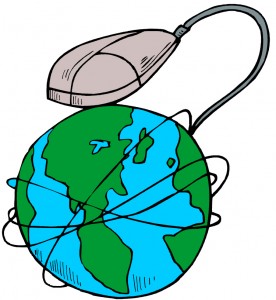
As the old Virginia Slims tagline for the Women’s Tennis Tour said in the 1970s, “WOW!” Oh, wait … that line was,
“You’ve come a long way, baby.”
The way publicists communicate with sports editors and reporters has changed along with the rest of the media world. What people on the outside of the industry may not know, however, are that the details that were carried out with physical and cerebral strength years ago, are today, combined with professionals’ organizational and technical abilities.
But I digress…
I venture to say that the most visual change among sports publicists and media are in the way each look. Sports were once all about the guys…the good ol’ boys…reporters chain-smoked or fashioned cigars hanging out of the corners of their mouths. Along came Title IX , which brought more women to the playing field. At the same time, press row began to show its feminine side.
While the majority of sports executives remain male, the overall composition today, is mixed. Issues from locker room access to who is allowed to play, put a spotlight on society’s shift as more women delayed marriage and took jobs outside their homes.
Jan Martin has worked in sports media for 30 years and has seen dramatic changes in the number of women who work in the field.
“I saw the number [of women in sports] increase every year,” said Martin, who has worked for organizations including the universities of Tennessee and Alabama sports information offices, and the Big Ten and Mid-Continent conferences. “I have also seen the number of women sportscasters on television increase, a growth from the Gayle Gardner days.” Martin said as a female who worked in sports publicity, it was often harder to prove her value than her male counterparts.
“Sometimes the service-oriented jobs such as passing out halftime stats, quickie quotes,making game books and such were women or more accurately, “student” jobs. But I was also blessed with many opportunities to directly learn the industry from providing value via conference and NCAA championships, Olympic Games functions and others. Gender roles were definitely blurred when I worked in sports publicity full-time.” The increase in women who work in sports publicity and media are far from the only things to change and evolve in the industry. To share what passed as technology more than 20 years ago puts me at risk for guffaws from rookies in sports media and publicity…but here goes: Regardless on any jokes you’ve heard, a VDT was not a social disease. A Video Display Terminal was a unit that essentially followed typewriters in newsrooms. It had no remote connection except to one main unit to which stories were fed. It boasted a video display that
used a cathode-ray tube. I was fortunate that my collegiate sports department had a functional VDT. It meant that I could edit copy on my screen instead of using corrector’s fluid or tape like my typewriter- user counterparts.
VDT
I got into sports media when most shared information via traditional or “snail mail,” or telecopier. A telecopy machine, in all its bulky metal and machineness, looked to be a first cousin to the telegraph. (After further review, it was a member of that family, just a few generations newer.) While working in the University of South Florida sports information office, member s of our staff would haul this 15-pound machine around in a case from office to arena and back. A piece of paper with stats or notes would be secured around a tube shaped cylinder and the machine, connected to phone line, would transmit information on thermal paper in somewhat blurry ink to a recipient, which was usually a media outlet or competing team that needed to see your club’s statistics. If you were on the receiving end, you not only knew your machine was operating because of the noise of the roller inside the machine, but from the nerve-bending smell that wafted during a
transmission.
Since then, we’ve morphed through the portable plain-paper fax machine to almost no faxes at all, as most notes and statistics are posted online or emailed. And, who among sports publicity and media veterans can forget our first taste of computers? The Radio Shack TRS-80 Model 100, often known as the “Trash 80,” was the first notebook-sized computer that featured an eight-line, 40-character LCD display with a word processing function. Public relations types would write game summaries, and media would file their stories with this machine via phone cord or couplers, the latter in which an office telephone receiver would fit snugly to securely send information. (check out this picture) Ahhh, the memories!
 Technology has most dramatically changed the way we, as publicists communicate with media, period. A consensus among media approached about this post, is that it’s not all good. Several mentioned a lack of personal touch as being a detriment in how we share and gather information.
Technology has most dramatically changed the way we, as publicists communicate with media, period. A consensus among media approached about this post, is that it’s not all good. Several mentioned a lack of personal touch as being a detriment in how we share and gather information.
“PR people seem even more aggressive now, with the contraction of “old media” outlets and the expansion of what now passes for news,” said award-winning Atlanta Journal Constitution sports columnist, Mark Bradley . “I guess it’s much easier for them to send an e-mail — or a tweet — than to pick up the phone, and have 40 or 50 separate conversations a day. I don’t know if it’s better, but it’s different.” Incidentally, Bradley says he prefers to receive column ideas by email.
Rick Bozich is a nationally respected and award-winning columnist from the Louisville Courier Journal who said that the 24-7 news cycle is better suited for those who adopt and accept constant change. “Sometimes this immediacy is good with the PR and media folks that
have truly embraced the new world,” Bozick said. “Sometimes it’s not good because there remains resistance on both sides. But it’s more intense and constant.” Like those of us who still consider a newspaper like a daily present, Bozich said he often misses the stacks of information that would arrive via traditional mail delivery. “Twenty years ago, the mail would pile up on my desk with press releases from the NBA, SEC, Big Ten, and the guys who represented boxers and golfers. I always looked forward to the mail arriving with the latest goodies every morning.
“The world moves at warp speed today. A tweet here. A text there. A Facebook post in between. Communication is constant — both ways – because of it.” As you might expect, sports PR types who have embraced and found value in technological communication, love it. There remain challenges, however. Southeastern Conference associate commissioner, Charles Bloom, said that credentialing events will become, if it isn’t already, the greatest challenge for sports PR professionals. “”The biggest difference and challenge for the sports PR professional that I see in the coming years, will be credentialing for events,” said Bloom, a sports PR veteran who broke into the business at Louisiana State University in 1986. “In the past, we could refer to households served and subscribers as well as journalistic standards and protocols. Now, anyone can have a blog, and it will be up the PR pros to get a credentialing policy together that will meet the best interests of the institution or team involved.”
Finally, and certainly not least, online tools have revved all communications to speeds and reaches that many of us saw possible decades from now. “The immediacy of the internet has made technological advances mandatory for us,” Bloom said. “There’s no such thing anymore as waiting for the 6 p.m. news or the morning paper’s deadline. You push out your facts now with proper thought into the process and strategy.”
Joe Favorito, a veteran freelance communications and marketing strategist, blogger and instructor, said that a lack of personal contact may, however, hurt publicity professionals in the long run.”I think the biggest thing that is lacking, and professionals should take more advantage of, is personal contact,” Favorito said. “Back in the day you would meet an editor or a writer for lunch or breakfast, even to catch up. Now most people in the industry have no real personal relationships with members of the media, and that really slows the process.
“You still have to have a personal relationship with your colleagues to be successful, I think, and we need to do less of hiding behind emails and more meeting to add a personal touch. It is a lot easier to get things done when you know someone.” My guess is that if I write this post 20 years from now, there will be dozens more changes in the way publicists and media communicate, simply because our technical worlds advance more quickly than ever before. A personal hope is that we don’t begin to employ people based on their technological prowess instead of their innate ability to tell stories. When it comes to sports media, we love stats, but we relate to anecdotes in people’s lives.
Much like Favorito, I agree that we must not forget the value of face- to-face meetings. Distance, shrinking news and publicity staffs and more work required of those who cover our sports make such meetings increasingly difficult, but they are possible. Skype and growth of other telecommunications tools may make sports media and PR people saying, “Wow … We’ve come a seriously long way…baby.”
###



Comment below
let us know your thoughts